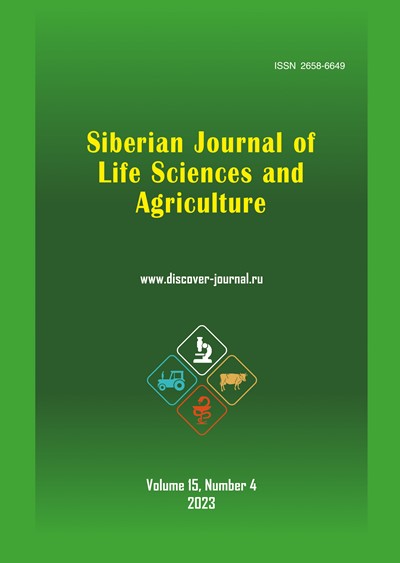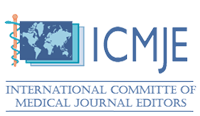ПОСТУЛИРОВАНИЕ YR-ГЕНОВ УСТОЙЧИВОСТИ К ЖЕЛТОЙ РЖАВЧИНЕ ПШЕНИЦЫ В 12 КОММЕРЧЕСКИХ СОРТАХ РОССИЙСКОЙ СЕЛЕКЦИИ
Аннотация
Желтая ржавчина (Puccinia striiformis f. sp. tritici) является распространенным заболеванием пшеницы, имеющим экономическое значение во всех регионах мира, возделывающих данную культуру. В большинстве регионов желтая ржавчина вызывает потери урожая от 10 до 70 % в зависимости от времени заражения, восприимчивости растения-хозяина, степени развития болезни и продолжительности эпифитотий. На юге России даже в годы с неблагоприятными условиями желтая ржавчина встречается ежегодно, а в отдельных районах встречались очаги с распространением до 50 %.
Фитопатологическое тестирование является одним из наименее дорогих и наиболее эффективных методов быстрой идентификации ювенильных генов устойчивости сортов к патогенам. Он позволяет в короткие сроки получить подробную информацию о генетике хозяина и возбудителя. В исследованиях этим методом постулированы гены устойчивости Yr и их комбинации у сортов озимой пшеницы российской селекции к северокавказской популяции желтой ржавчины.
Целью исследований стала идентификация известных генов устойчивости к желтой ржавчине в 12 коммерческих сортах озимой пшеницы методом фитопатологического тестирования.
Материалы и методы. Постулирование известных генов устойчивости проводили в тепличном комплексе (ювенильная стадия) и на полевом стационаре (стадия взрослых растений) лаборатории иммунитета растений к болезням Федерального научного центра биологической защиты растений (г. Краснодар). Для постулирования был использован метод Дубина с соавторами (1989), основанный на сравнении типов реакции сортов-дифференциаторов и изучаемых сортов на изоляты возбудителя желтой ржавчины пшеницы.
Результаты. В 10 из 12 сортов озимой пшеницы российской селекции были постулированы 13 генов устойчивости к желтой ржавчине и их комбинаций: Yr3, Yr3a, Yr6, Yr32, Yr2+6, Yr2+9, Yr39+Alp, Yr4+12, Yr4b, Yr3a+4a+H46, YrA, YrSp, YrSU. Не выявлены гены устойчивости Yr2, Yr5, Yr10, Yr10+Mor, Yr24, Yr27, Yr25+32, так как из северокавказской популяции P. striiformis не было выделено изолятов, вирулентных к носителям этих генов, и они являются высокоэффективными по отношению к данной популяции. В сортах Курс, Морозко и Степь были выявлены высокоэффективные (Yr3, Yr2+9, Yr3a, Yr4+12, Yr3a+4a+H46) гены устойчивости. В сорте Гурт – сочетание эффективных генов Yr2+6.
В условиях поля высокую устойчивость (степень поражения до 10 %) к северокавказской популяции возбудителя желтой ржавчины проявили линии и сорта-дифференциаторы, содержащие гены устойчивости Yr2, Yr3, Yr8, Yr10, Yr24, Yr25, Yr27, Yr10+Mor, Yr3a, Yr25+32, Yr3a+4a+H46, Yr3с+Min, Yr4+12, Yr7+25, Yr8+19, 8+6+25, YrSp. Из-за низкой степени поражения данные гены и их сочетания относятся к категории высокоэффективных и эффективных и могут быть вовлечены в селекционный процесс для создания новых устойчивых сортов. Сорта, содержащие данные гены, также могут быть рекомендованы практической селекции и использованы в производстве для эффективного контроля заболевания.
Скачивания
Литература
References
Gul’tyaeva E.I., Levitin M.M., Semenyakina N.F., Nikiforova N.V., Savel’eva N.I. Bolezni zernovyh kul’tur v Severo-Zapadnom regione Rossii [Diseases of grain crops in the North-West region of Russia]. Zashchita i karantin rastenij [Plant Protection and Quarantine], 2007, no. 6, pp. 15-16.
Gul’tyaeva E.I., Levitin M.M., Semenyakina N.F., Nikiforova N.V., Kazakevich E.V. Fitosanitarnaya situaciya na posevah zernovyh kul’tur Severo-Zapadnom regione [Phytosanitary situation on grain crops in the North-West region]. Zashchita i karantin rastenij [Plant Protection and Quarantine], 2008, no. 5, pp. 50-51. https://cyberleninka.ru/article/n/fitosanitarnaya-situatsiya-na-posevah-zernovyh-kultur-v-severo3zapadnom-regione
Kojshybaev M., SHamanin V.P., Morgunov A.I. Skrining pshenicy na ustojchivost’ k osnovnym boleznyam: metodicheskie ukazaniya [Screening of wheat for resistance to major diseases: guidelines]. Ankara: FAO-SEC, 2014, 64 p. https://www.fao.org/3/i5550r/i5550r.pdf
Matveeva I.P., Volkova G.V. ZHeltaya rzhavchina pshenicy. Raspro-stranenie, vredonosnost’, mery bor’by (obzor) [Wheat stripe rust. Distribution, damage, control measures (review)]. Vestnik Ul’yanovskoj gosudarstvennoj sel’skohozyajstvennoj akademii [Bulletin of the Ulyanovsk State Agricultural Academy], 2019, no. 2 (46), pp. 102-116. https://doi.org/10.18286/1816-4501-2019-2-102-116
Morozova A.A. Vidovoj sostav rzhavchiny ozimoj pshenicy i ih rasprostranenie v Krasnodarskom krae [Species composition of winter wheat rust and their distribution in Krasnodar Krai]. Trudy Kubanskogo SKHI [ Proceedings of the Kuban Agricultural Institute], 1974, vol. 79, no. 107, pp. 49-55.
Tyryshkin L.G., Kolesova M.A. Ispol’zovanie molekulyarno-geneticheskogo i fitopatologicheskogo metodov dlya identifikacii genov ef-fektivnoj ustojchivosti k listovoj rzhavchine u obrazcov egilopsov [Using molecular genetics and phytopathological methods to identify genes for effective resistance to leaf rust in Aegilops specimens]. Trudy po prikladnoj botanike, genetike i selekcii [Works on Applied Botany, Genetics and Breeding], 2020, vol. 181 (2), pp. 87-95. https://doi.org/10.30901/2227-8834-2020-2-87-95
CHuprina V.P., Sokolov M.S., Anpilogova L.K., Goncharov V.T., Pi-kusheva E.A., Kireenkova A.E., SHamina V.Z. Fitosanitarnoe sostoyanie posevov ozimoj pshenicy na yuge Rossii [Phytosanitary condition of winter wheat crops in Southern Russia]. Zashchita i karantin rastenij [Plant Protection and Quarantine], 1998, no. 4, pp. 22-24.
Shumilov Yu.V. Agrobiologicheskoe obosnovanie priemov snizheniya infektsionnogo potentsiala vozbuditelya zheltoy rzhavchiny pshenitsy na Severnom Kavkaze [Agrobiological substantiation of methods for reducing the infectious potential of the wheat yellow rust pathogen in the North Caucasus]: PhD thesis: 06.01.07; Saratov State Agrarian University named after N.I. Vavilov, Saratov, 2013, 277 p.
Chen X M. Epidemiology and control of stripe rust (Puccinia striiformis f. sp. tritici on wheat. Canadian Journal Plant Pathology, 2005, vol. 27, pp. 314-337. https://www.tandfonline.com/doi/abs/10.1080/07060660509507230
Dawit W., Flath K., Webber W.E., Schumann E., Röder M.S., Chen X. Postulation and mapping of seedling stripe rust resistancegenes in Ethiopian bread wheat cultivars Journal of Plant Pathology, 2012, vol. 94(2), pp. 403-409. https://www.sipav.org/main/jpp/index.php/jpp/article/view/2568/1244
Dubin H J, Johnson R, Stubbs RW. Postulated genes for resistance to stripe rust in selected CIMMYT and related wheats Plant Disease, 1989, no. 73, pp. 472-475. https://www.apsnet.org/publications/plantdisease/backissues/Documents/1989Articles/PlantDisease73n06_472.PDF
Feng J., Zhang Zh., Lin R., Xu Sh. Postulation of seedling resistance genes in 20 wheat cultivars to yellow rust (Puccinia striiformis f. sp. tritici). Agricultural Sciences in China, 2009, vol. 8(12), pp. 1429-1439. https://www.sciencedirect.com/science/article/abs/pii/S1671292708603569
Flor H. H. Current status of the gene-for-gene concept. Annual Review Phytopathology, 1971, vol. 9, pp. 275-296. https://www.annualreviews.org/doi/abs/10.1146/annurev.py.09.090171.001423
Flor H.H. The complementary genic systems in flax and flax rust. Adv Genet, 1956, vol. 8, pp. 29-54. https://www.sciencedirect.com/science/article/abs/pii/S0065266008604988?via%3Dihub
Gultyaeva E.I., Shaidayuk E.L., Rsaliyev A.S. Identification of leaf rust resistance genes in spring soft wheat samples developed in Russia and Kazakhstan. Plant Protection News, 2019, vol. 3(101), pp. 41-49. https://plantprotect.ru/index.php/vizr/article/view/4805
Johnson R., Stlibbs K.W., Euchs E., Chamberlain N H. Nomenclature for physiologic races of Puccinia striiformis infecting wheats. Transactions of the British Mycological Society, 1972, vol. 58, pp. 475-480. https://www.sciencedirect.com/science/article/abs/pii/S0007153672800962
Li M. Feng J., Cao Sh., Lin R., Cheng G., Yu Ya., Chen W. and Xu Sh. Postulation of Seedlings Resistance Genes to Yellow Rust in Commercial Wheat Cultivars from Yunnan Province in China. Agricultural Sciences in China, 2011, vol. 10(11), pp. 1723-1731. https://www.agriculturejournals.cz/publicFiles/137_2015-PPS.pdf
McNeal F H, Konzak C F, Smith E P, Tate W S, Russel T S. A uniform system for recording and processing cereal research data. Agricultural Research Service, 1971, vol. 42, pp. 34-121. https://naldc.nal.usda.gov/download/CAT40003231/pdf
Randhawa M., Bansal U., Lillemo M., Miah H., Bariana H. Postulation of rust resistance genes in Nordic spring wheat genotypes and identification of widely effective sources of resistance against the Australian rust flora. J Appl Genetics, 2016, vol. 57, pp. 453–465. https://doi.org/10.1007/s13353-016-0345-6
Sharma S., Louwers J.M., Karki C.B., Snijders C.H.A. Postulation of resistance genes to yellow rust in wild emmer wheat derivatives and advanced wheat lines from Nepal. Euphytica, 1995, vol. 81, pp. 271-277. https://link.springer.com/article/10.1007/BF00025617
Shishkin N.V., Derova T.G., Gultyaeva E.I., Shaydayuk Е.L. Identification of the genes resistant to brown rust in winter soft wheat varieties with the use of conventional and modern research methods. Grain Economy of Russia, 2018, vol. 5(59), pp. 63-67. https://doi.org/10.31367/2079-8725-2018-59-5-63-67
Tyryshkin L.G. About DNA-markers as sole criteria for postulation of Lr-genes of the Triticum aestivum L. resistance to Puccinia triticina Erikss.: critical essay. Agricultural Biology, 2010, vol. 45(3), pp. 76-81. http://www.agrobiology.ru/3-2010tirishkin-eng.html
Tyryshkin L.G. Genetic control of effective juvenile resistance to leaf rust in collection samples of Triticum aestivum L. Russian Journal of Genetics, 2006, vol. 42(3), pp. 377-384. https://link.springer.com/article/10.1134/S1022795406030094
Volkova G.V., Kudinova O.A., Vaganova O.F. Postulation of leaf rust resistance genes of 20 wheat cultivars in southern Russia. Journal of Plant Protection Research, 2020, vol. 60(3), pp. 225-232. http://www.plantprotection.pl/pdf-120656-54566?filename=Postulation%20of%20leaf%20rust.pdf
Volkova G.V., Matveeva I.P., Kudinova O.A. Virulence of the Wheat Stripe Rust Pathogene Populationin the North-Caucasus Region of Russia. Mycology and Phytopathology, 2020, vol. 54 (1), pp. 33–41 https://doi.org/10.31857/S0026364820010110
Wamalwa M.N., Owuoche J., Ogendo J., Wanyera R. Multi-Pathotype Testing of Selected Kenyan Wheat Germplasm and Watkin Landraces for Resistance to Wheat Stripe Rust (Puccinia striiformis f. sp tritici) Races. Agronomy, 2019, vol. 9, 770. https://www.mdpi.com/2073-4395/9/11/770
Список литературы
Гультяева Е.И., Левитин М.М., Семенякина Н.Ф., Никифорова Н.В., Савельева Н.И. Болезни зерновых культур в Северо-Западном регионе России // Защита и карантин растений. 2007. №6. С. 15-16.
Гультяева Е.И., Левитин М.М., Семенякина Н.Ф., Никифорова Н.В., Казакевич Е.В. Фитосанитарная ситуация на посевах зерновых культур Северо-Западном регионе // Защита и карантин растений. 2008. №5. С. 50-51. https://cyberleninka.ru/article/n/fitosanitarnaya-situatsiya-na-posevah-zernovyh-kultur-v-severo3zapadnom-regione
Койшыбаев М., Шаманин В.П., Моргунов А.И. Скрининг пшеницы на устойчивость к основным болезням: методические указания. // Анкара: ФАО-СЕК, 2014. C. 64. https://www.fao.org/3/i5550r/i5550r.pdf
Матвеева И.П., Волкова Г.В. Желтая ржавчина пшеницы. Распространение, вредоносность, меры борьбы (обзор). // Вестник Ульяновской государственной сельскохозяйственной академии. 2019. № 2 (46). С. 102-116. https://doi.org/10.18286/1816-4501-2019-2-102-116
Морозова А.А. Видовой состав ржавчины озимой пшеницы и их распространение в Краснодарском крае // Тр. Кубанского СХИ, 1974. Вып. 79, № 107. С. 49-55.
Тырышкин Л.Г., Колесова М.А. Использование молекулярно-генетического и фитопатологического методов для идентификации генов эффективной устойчивости к листовой ржавчине у образцов эгилопсов // Труды по прикладной ботанике, генетике и селекции. 181 (2), 2020. С. 87-95. https://doi.org/10.30901/2227-8834-2020-2-87-95
Чуприна В.П., Соколов М.С., Анпилогова Л.К., Гончаров В.Т., Пикушева Э.А., Киреенкова А.Е., Шамина В.З. Фитосанитарное состояние посевов озимой пшеницы на юге России // Защита и карантин растений. 1998. № 4. С. 22-24.
Шумилов, Ю.В. Агробиологическое обоснование приемов снижения инфекционного потенциала возбудителя желтой ржавчины пшеницы на Северном Кавказе: дисс. … канд. с.-х. наук: 06.01.07/ Шумилов Юрий Валерьевич; ФГБОУ ВПО «Саратовский государственный аграрный университет имени Н.И.Вавилова», Саратов, 2013. C. 277.
Chen X M. 2005. Epidemiology and control of stripe rust (Puccinia striiformis f. sp. tritici on wheat // Canadian Journal Plant Pathology. Vol. 27. P. 314-337. https://www.tandfonline.com/doi/abs/10.1080/07060660509507230
Dawit W., Flath K., Webber W.E., Schumann E., Röder M.S., Chen X. Postulation and mapping of seedling stripe rust resistancegenes in Ethiopian bread wheat cultivars // Journal of Plant Pathology. 2012. Vol. 94(2). P. 403-409. https://www.sipav.org/main/jpp/index.php/jpp/article/view/2568/1244
Dubin H J, Johnson R, Stubbs RW. Postulated genes for resistance to stripe rust in selected CIMMYT and related wheats // Plant Disease, 1989. № 73. P. 472-475. https://www.apsnet.org/publications/plantdisease/backissues/Documents/1989Articles/PlantDisease73n06_472.PDF
Feng J., Zhang Zh., Lin R., Xu Sh. Postulation of seedling resistance genes in 20 wheat cultivars to yellow rust (Puccinia striiformis f. sp. tritici) // Agricultural Sciences in China. 2009. Vol. 8(12). P. 1429-1439 https://www.sciencedirect.com/science/article/abs/pii/S1671292708603569
Flor H. H. Current status of the gene-for-gene concept // Annual Review Phytopathology, 1971. Vol. 9. P. 275-296. https://www.annualreviews.org/doi/abs/10.1146/annurev.py.09.090171.001423
Flor H.H. The complementary genic systems in flax and flax rust. // Adv Genet. 1956. Vol. 8, P. 29-54. https://www.sciencedirect.com/science/article/abs/pii/S0065266008604988?via%3Dihub
Gultyaeva E.I., Shaidayuk E.L., Rsaliyev A.S. Identification of leaf rust resistance genes in spring soft wheat samples developed in Russia and Kazakhstan // Plant Protection News. 2019. Vol. 3(101). P. 41-49. https://plantprotect.ru/index.php/vizr/article/view/4805
Johnson R., Stlibbs K.W., Euchs E., Chamberlain N H. Nomenclature for physiologic races of Puccinia striiformis infecting wheats // Transactions of the British Mycological Society, 1972. Vol. 58. P. 475-480. https://www.sciencedirect.com/science/article/abs/pii/S0007153672800962
Li M. Feng J., Cao Sh., Lin R., Cheng G., Yu Ya., Chen W. and Xu Sh. Postulation of Seedlings Resistance Genes to Yellow Rust in Commercial Wheat Cultivars from Yunnan Province in China // Agricultural Sciences in China, 2011. Vol. 10(11). P. 1723-1731. https://www.agriculturejournals.cz/publicFiles/137_2015-PPS.pdf
McNeal F H, Konzak C F, Smith E P, Tate W S, Russel T S. A uniform system for recording and processing cereal research data // Agricultural Research Service, 1971. Vol. 42. P. 34-121. https://naldc.nal.usda.gov/download/CAT40003231/pdf
Randhawa M., Bansal U., Lillemo M., Miah H., Bariana H. Postulation of rust resistance genes in Nordic spring wheat genotypes and identification of widely effective sources of resistance against the Australian rust flora // J Appl Genetics. 2016. Vol. 57. P. 453–465. https://doi.org/10.1007/s13353-016-0345-6
Sharma S., Louwers J.M., Karki C.B., Snijders C.H.A. Postulation of resistance genes to yellow rust in wild emmer wheat derivatives and advanced wheat lines from Nepal // Euphytica. 1995. Vol. 81. P. 271-277. https://link.springer.com/article/10.1007/BF00025617
Shishkin N.V., Derova T.G., Gultyaeva E.I., Shaydayuk Е.L. Identification of the genes resistant to brown rust in winter soft wheat varieties with the use of conventional and modern research methods // Grain Economy of Russia. 2018. Vol. 5(59). P. 63-67. https://doi.org/10.31367/2079-8725-2018-59-5-63-67
Tyryshkin L.G. About DNA-markers as sole criteria for postulation of Lr-genes of the Triticum aestivum L. resistance to Puccinia triticina Erikss.: critical essay // Agricultural Biology. 2010. Vol. 45(3). P. 76-81. http://www.agrobiology.ru/3-2010tirishkin-eng.html
Tyryshkin L.G. Genetic control of effective juvenile resistance to leaf rust in collection samples of Triticum aestivum L. // Russian Journal of Genetics. 2006. Vol. 42(3). P. 377-384. https://link.springer.com/article/10.1134/S1022795406030094
Volkova G.V., Kudinova O.A., Vaganova O.F. Postulation of leaf rust resistance genes of 20 wheat cultivars in southern Russia // Journal of Plant Protection Research. 2020. Vol. 60. № 3. P. 225-232. http://www.plantprotection.pl/pdf-120656-54566?filename=Postulation%20of%20leaf%20rust.pdf
Volkova G.V., Matveeva I.P., Kudinova O.A. Virulence of the Wheat Stripe Rust Pathogene Populationin the North-Caucasus Region of Russia // Mycology and Phytopathology, 2020. Vol. 54 (1). P. 33–41. https://doi.org/10.31857/S0026364820010110
Wamalwa M.N., Owuoche J., Ogendo J., Wanyera R. Multi-Pathotype Testing of Selected Kenyan Wheat Germplasm and Watkin Landraces for Resistance to Wheat Stripe Rust (Puccinia striiformis f. sp tritici) Races // Agronomy. 2019. Vol. 9, 770. https://www.mdpi.com/2073-4395/9/11/770
Просмотров аннотации: 238 Загрузок PDF: 144
Copyright (c) 2023 Irina P. Matveeva, Galina V. Volkova, Yury S. Kim, Yana V. Yakhnik

Это произведение доступно по лицензии Creative Commons «Attribution-NonCommercial-NoDerivatives» («Атрибуция — Некоммерческое использование — Без производных произведений») 4.0 Всемирная.






















































